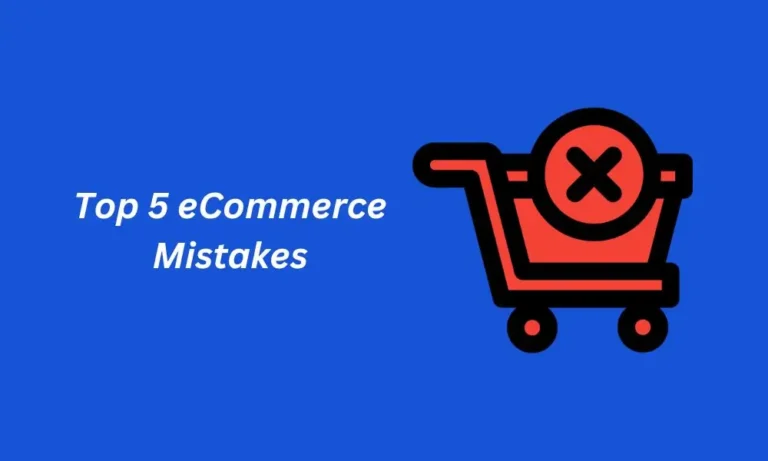In this blog post, you’ll learn how to choose the perfect niche for your ecommerce business. If this interests you, then keep reading!
Introduction
Starting an eCommerce business can be exciting, but one of the most critical steps to success is choosing the right niche. Your niche will define what products you sell, who your target audience is, and how you position yourself in the market. It’s not just about picking something random — it’s about finding a sweet spot between your interests, market demand, and competition.
In this guide, I’ll will walk you through the process on how to choose the perfect niche for your eCommerce business. By the end, you’ll have a clear understanding of how to identify a niche that aligns with your passions, is backed by solid market research, and has room for growth.
Table of Contents
Choose the Perfect Niche for Your eCommerce Business

The time has come for you to choose the perfect niche for your ecommerce business and below are 3 crucial tips to follow.
1. Why Choosing the Right Niche is Crucial
Your niche is the foundation of your eCommerce business. It dictates everything from the products you sell to the customers you attract. A well-defined niche helps you:
- Stand out in a crowded market: In the world of eCommerce, competition is fierce. By narrowing your focus to a specific niche, you reduce competition and attract a more targeted audience.
- Build a loyal customer base: A specific niche allows you to understand your audience deeply, helping you create products and content that resonate with them. This leads to higher customer retention and loyalty.
- Optimize your marketing efforts: With a niche, your marketing can be laser-focused, leading to more effective advertising campaigns and better return on investment (ROI).
- Stay motivated: When you choose a niche you’re passionate about, running your business becomes more enjoyable, and you’re more likely to stay committed to growing it.
2. Step-by-Step Guide to Choosing the Perfect Niche
2.1 Identify Your Interests and Passions
The first step in choosing a niche is self-reflection. What are you passionate about? Starting a business requires dedication and hard work, so choosing a niche that aligns with your interests will make the process more enjoyable.
Why Passion Matters
Passion fuels persistence. Running an eCommerce business is not without its challenges. There will be times when things don’t go as planned, and it’s your passion that will keep you going. When you’re passionate about a subject, you’ll naturally want to learn more about it, which will make you a better business owner in that space.
How to Identify Your Passions
Here are some prompts to help you brainstorm your interests:
- What are your hobbies? Do you love fitness, cooking, traveling, or fashion?
- What problems have you solved in your life? If you’ve successfully tackled issues in your personal life, there might be others looking for similar solutions.
- What topics do you enjoy learning about? If you find yourself constantly reading or researching a particular subject, this could be a sign that it’s a niche worth exploring.
Example Niches Based on Passion
- Fitness Enthusiast: Fitness gear, supplements, or workout plans.
- Pet Lover: Pet products like toys, accessories, or healthy treats.
- Eco-Conscious Shopper: Sustainable products such as reusable bags, eco-friendly skincare, or bamboo utensils.
2.2 Conduct Market Research
Once you have a few niche ideas based on your passions, it’s time to validate them with market research. This step will ensure there’s demand for your niche and that you won’t struggle to find customers.
Tools for Market Research
Here are some powerful tools to help you conduct market research:
- Google Trends: This free tool shows the popularity of a search term over time. Enter your niche idea to see if it’s trending upwards or if interest is waning.
- Amazon Best Sellers: Browse through the best-sellers in categories related to your niche. This will give you an idea of what products are currently in demand.
- Keyword Research: Tools like Ahrefs or Ubersuggest can help you find popular search terms related to your niche. The higher the search volume, the more people are looking for products or information in that area.
- Social Media Trends: Platforms like TikTok, Instagram, and Pinterest are great for spotting trends. Look at hashtags and influencers in your niche to see what’s gaining traction.
Evaluating the Demand
While it’s essential to choose a niche you’re passionate about, it’s equally important to ensure there’s enough demand. You don’t want to enter a market where there are only a handful of potential customers. Look for consistent search volumes, growing interest, and a solid customer base.
Example: Market Research for a Fitness Niche
- Google Trends: A search for “home fitness equipment” shows a consistent upward trend, especially after the pandemic.
- Amazon Best Sellers: Categories like resistance bands and dumbbells are consistently among the top-selling items.
- Keyword Research: High search volumes for terms like “best at-home workouts” and “home gym essentials” indicate demand.
2.3 Analyze Competitors
Competition isn’t necessarily a bad thing — it means there’s a market for your niche. However, you need to understand your competitors to find opportunities where you can differentiate your brand and stand out.
How to Perform Competitor Analysis
- Identify your main competitors: Search for businesses that are already established in your niche. These could be direct competitors (selling the same products) or indirect competitors (offering similar solutions).
- Analyze their strengths and weaknesses: Visit their websites and social media pages. What are they doing well? Do they have a strong brand presence? Where are their gaps? Perhaps their product range is limited, or their customer service is lacking.
- Read customer reviews: Reviews can be a goldmine of information. Customers often highlight what they love about a product and where improvements could be made. These insights can help you position your product better.
- Use competitor research tools: Tools like SEMrush and SpyFu can help you analyze your competitors’ website traffic, keywords, and backlinks. This gives you an idea of their digital marketing strategies and how you can compete.
Finding Gaps in the Market
When analyzing competitors, look for areas where you can offer something unique. Maybe their product is good, but their branding is generic. Or perhaps they have a strong product range, but their customer experience is lacking. These gaps present opportunities for you to stand out.
Example: Competitor Analysis for a Pet Product Niche
- Main Competitors: Companies like Chewy.com and BarkBox dominate the pet product space.
- Strengths: Strong branding, great customer service, and a wide variety of products.
- Weaknesses: Lack of eco-friendly options or customizable pet products.
- Opportunities: Launching a brand focused on sustainable pet products with personalized options for pets.
3. Additional Tips for Choosing the Right Niche
3.1 Solve a Problem
One of the most effective ways to build a successful business is by solving a problem for your customers. When choosing a niche, think about what pain points your target audience may have and how you can offer a solution.
Example: Solving a Problem in the Skincare Niche
Many people struggle to find natural, organic skincare products that are also affordable. If you can create a product line that addresses this issue, you’ll attract customers who are looking for a solution to this common problem.
3.2 Consider Profitability
It’s not enough to have a passion and an audience — your niche also needs to be profitable. You don’t want to choose a niche where the margins are so slim that it’s difficult to make a profit.
How to Determine Profitability
- Product Costs vs. Selling Price: Look at the cost of manufacturing or sourcing your products and compare it to the selling price. Are the margins large enough to cover your expenses and still make a profit?
- Shipping Costs: Some products are more expensive to ship than others, which can eat into your profits. Make sure you account for shipping when calculating profitability.
- Recurring Revenue Opportunities: Look for niches where you can generate recurring revenue, such as subscription boxes or consumable products.
3.3 Test Before You Invest
Before fully committing to a niche, it’s a good idea to test your concept. You can do this by setting up a simple online store or running a small ad campaign to gauge interest. If you see traction, then you know you’re onto something.
Example: Testing a Niche in the Eco-Friendly Products Space
You could start by creating a small online store with a few eco-friendly products, such as bamboo toothbrushes or reusable shopping bags. Run some social media ads to drive traffic and see if people are interested in what you’re offering.
Conclusion
Choosing the right niche is one of the most important decisions you’ll make when starting an eCommerce business. By identifying your passions, conducting thorough market research, analyzing competitors, and testing your ideas, you can find a niche that’s both profitable and enjoyable to work in. Remember, a successful niche is one that not only aligns with your interests but also has enough demand and room for growth.
Once you’ve chosen your niche, the next step is to dive into product sourcing, building your online store, and creating a marketing strategy that will help you reach your target audience. But for now, focus on finding that perfect niche — it’s the foundation for everything that follows.
Frequently Asked Questions
1. Why is choosing a niche important for eCommerce success?
Choosing a niche helps you focus your efforts on a specific market, reducing competition and allowing you to target a well-defined audience. A clear niche helps build brand loyalty, simplifies your marketing strategies, and makes it easier to create products and content that resonate with your customers.
2. What if I’m passionate about multiple niches? How do I choose?
If you have multiple passions, start by conducting market research on each niche to evaluate demand and competition. Assess profitability, growth potential, and gaps in the market. Consider starting with the niche that aligns most with your long-term goals or the one that excites you the most.
3. How do I know if a niche has enough demand?
Use tools like Google Trends to track search interest over time, browse Amazon Best Sellers for trending products, and conduct keyword research to gauge search volumes. Social media platforms like Instagram and TikTok can also give real-time insights into what’s popular in your niche.
4. What should I look for when analyzing competitors in my niche?
When analyzing competitors, focus on their strengths and weaknesses. Pay attention to their product offerings, pricing, customer service, and brand positioning. Identify gaps where you can offer something unique, whether it’s better product quality, improved customer experience, or a niche-specific focus.
5. How can I ensure my niche is profitable?
To ensure profitability, calculate your product costs, including manufacturing, sourcing, and shipping expenses. Compare this to your potential selling price to determine your profit margins. Look for niches with opportunities for recurring revenue, such as subscription-based models or consumable products.
6. Can I test my niche before fully committing to it?
Yes, you can test your niche by launching a small online store or running a limited marketing campaign. Use social media ads, email marketing, or landing pages to see if there’s genuine interest and demand for your products before making a large investment in inventory or a full-scale launch.




